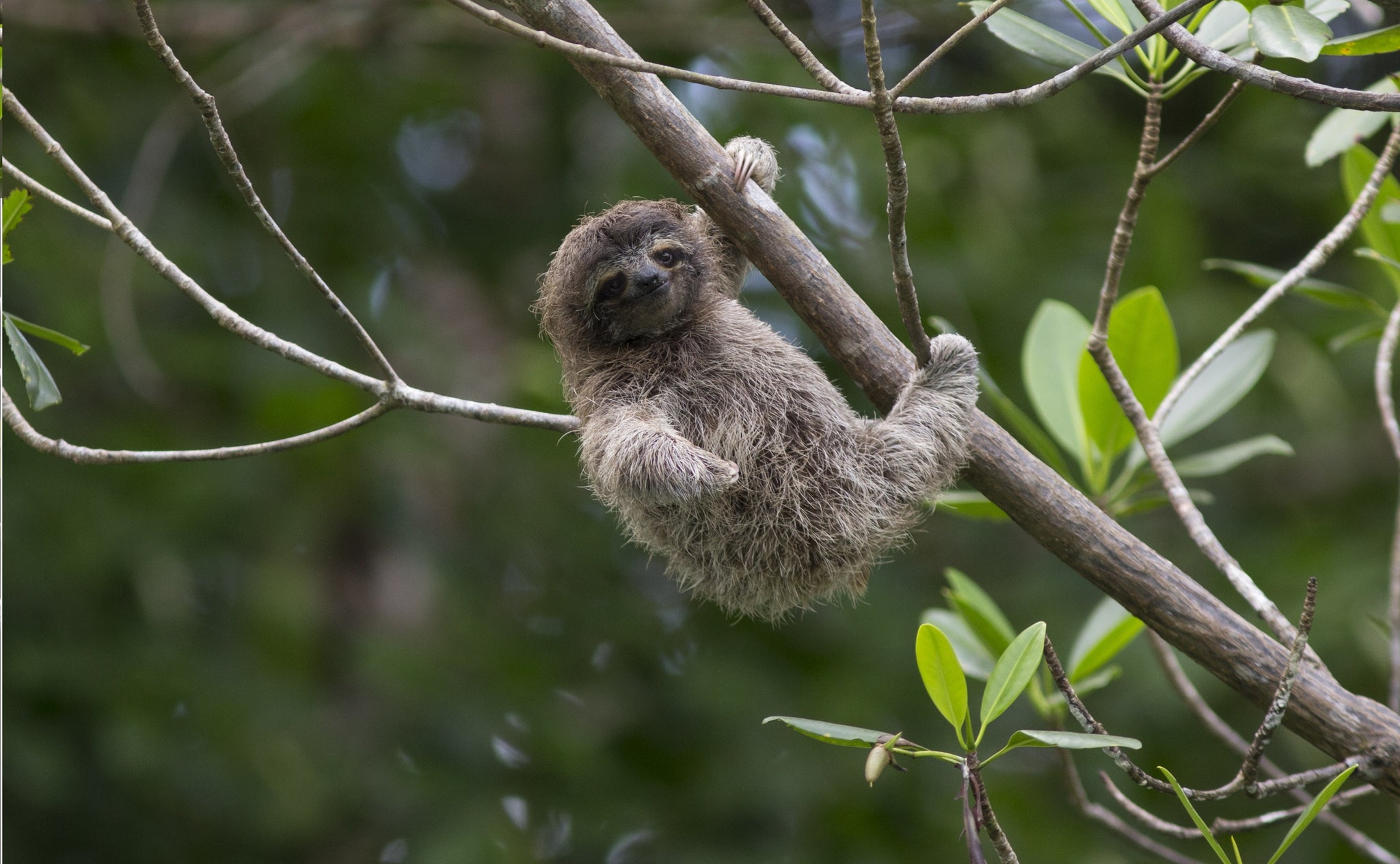
A while ago, the internet went crazy over the story of a five-month-old baby girl and her best friend: a pet sloth. The story is accompanied by undeniably adorable photos and a video that has quickly gone viral, attracting attention from all over the world. I can’t deny that the photos are cute and that this catapulted sloths back into the media spotlight – but I fear that the negative repercussions may have outweighed the benefits on this one.
Firstly, sloths are wild animals – not domestic pets. Sure, the babies are undeniably cute, but these wild animals maintain their natural instincts. That means that they do not like to be petted, groomed, bathed… and they certainly do not enjoy being manipulated in an unnatural way. Sloths, unlike many animals, do not show obvious external signs of stress. Their natural response to fear or danger is to hold still, and as a result, it is difficult to tell when a sloth is scared or stressed. The animal may look perfectly happy to us – but the reality will probably be very different.
I have absolutely no doubt that this sloth photo shoot was staged with the sole purpose of creating a viral hit. But my biggest concern is that public exposure to these images will have negative repercussions for sloths in general. Whether this was intentional or not, the tone of the story effectively glamorises the concept of owning a pet sloth. From what I’ve seen, the standard response to the images seems to be: I want one! And that is where the problems begin.
The sad reality is, sloths that are sold as pets usually come from the wild. Even if the baby sloth was born in the US, it’s more than likely that the parents would have been taken from the wild several years earlier. Sloths are very slow to breed: the gestation period is 11 months, they only give birth to one baby at a time and this infant needs its mother’s milk for a long while after that. In the wild, baby sloths usually spend a full year with their mothers before reaching independence. This means that the sloths currently being held in captivity in the US cannot physically produce enough babies to meet the ever-increasing demand from people wanting pet sloths. So every year, hundreds of sloths are removed from the wild and shipped to the US from countries such as Venezuela and Ecuador where export laws are slack. These individuals are then forced to breed and the babies are sold into the pet trade at eye-watering prices.
“The media coverage of this pet sloth story absolutely portrays the image of a happy family and I fear that many people will buy into this fantasy.”
Because baby sloths are indisputably cute, this is what everybody focuses on. The sad reality of the situation is often overlooked. The media coverage of this pet sloth story absolutely portrays the image of a happy family and I fear that many people will buy into this fantasy. This doesn’t just pose a threat to the sloths, but can also endanger the sloth owners themselves. Sloths are not teddy-bears – they are wild animals and they have big teeth. I have worked with many sloths over the years, both wild and hand-reared, and they can all inflict serious injuries if scared or irritated. When they reach independence (at the age of about one year), even the most gentle of hand-reared sloths just do not want to be handled any longer. I suspect that many people are going to learn this the hard way and will find themselves with an expensive, hard-to-handle sloth that could live for up to 40 years.
At the end of the day, I can’t help but feel a little disappointed to see that as a society we can still find so much entertainment in the anthropomorphism and exploitation of wild animals. This is by no means an issue that is confined to sloths; indeed, many species are on the brink of extinction because of it. It’s also not a problem that is confined just to the pet trade; it is much bigger than that. It’s an issue of morality. I believe that the trouble lies in the way we, as humans, see ourselves as the dominant species, and the way in which we can morally justify our use of wild animals. I do believe that our attitudes are slowly changing, but education is unequivocally the key. As the environmentalist Baba Dioum once famously said:
“In the end we will conserve only what we love. We will love only what we understand. We will understand only what we are taught.”